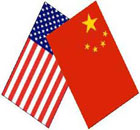About the Western Development Strategy
Western development strategy
(Xinhua)
Updated: 2009-12-22 15:34
 |
Large Medium Small |
On March 22, 1999, the State Council stipulated 10 measures for the further development of the western region, covering six provinces (Gansu, Guizhou, Qinghai, Shaanxi, Sichuan and Yunnan), five autonomous regions (Guangxi, Inner Mongolia, Ningxia, Tibet and Xinjiang) and one municipality (Chongqing) with a combined population of about 370 million.
The Chinese government formally kick-started the Western Development Strategy in January 2000 to help underdeveloped western region catch up with the more prosperous eastern region.
In the last 10 years, the central government had financed more than 3.5 trillion yuan ($512.4 billion) to support development of the western region, according to the statistics from National Development and Reform Commission (NDRC).
In 2009 , China's planned investment in the region stood at 468.9 billion yuan.
During the nine years from 2000 to 2008, GDP of the western region jumped from 1.66 trillion yuan to 5.82 trillion yuan, at an annual average growth rate of 11.7 percent.
More than 9.54 million rural residents had been lifted from poverty in the western region since 1999, and the country would mark the 10th anniversary of the strategy next January, according to the NDRC.







